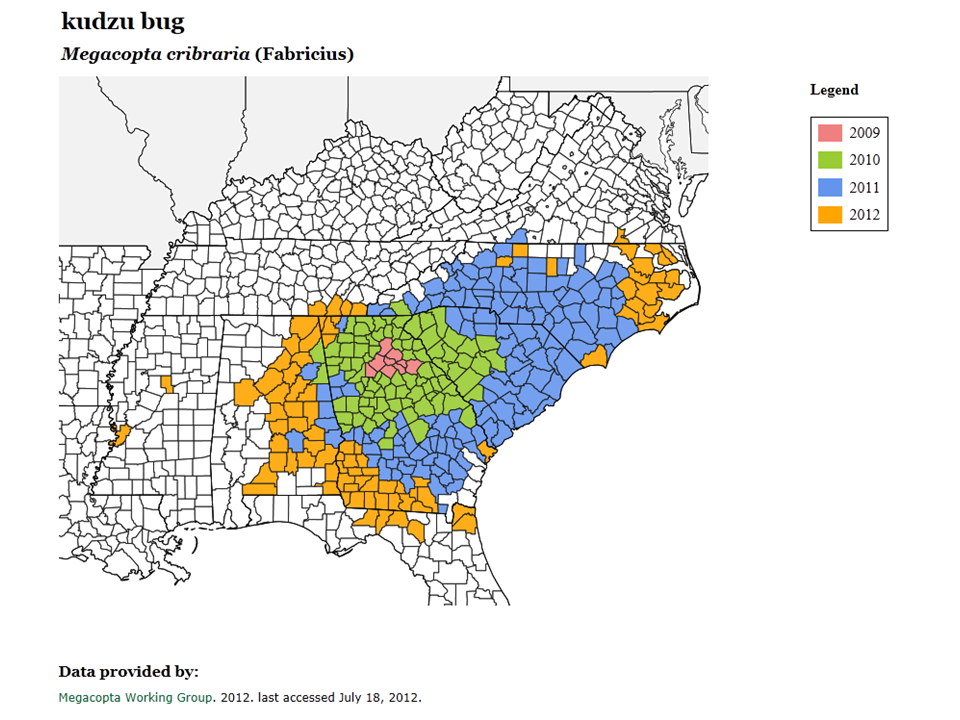A new exotic pest, commonly called the Kudzu Bug, was found in Georgia during autumn 2009. The population has increased and spread since its discovery. As of July 2012, it has been confirmed in eight southeastern states, including Florida. The Kudzu Bug, Megacopta cribraria, is also identified as the bean plastid, lablab bug, or globular stink bug.
Kudzu bugs are a stink-bug type pest that feeds on legume plants such as kudzu, wisteria, soybeans, and with some limited reports on lima beans and peas. Kudzu is a key host where they overwinter and lay eggs.
It takes six to eight weeks for kudzu bugs to go from egg to adult. They migrate to soybean fields over several weeks in the summer months.
Typically they will be seen first on field edges near wooded areas. Infestations, when noticed, may cause a farmer great alarm, because of the large number of adult kudzu bugs flying around.
In June of 2010 and 2011 there were two generations which attacked soybean fields in Georgia. Studies in unprotected plots in Georgia and South Carolina had yield losses averaging 18 percent, with a range of 0-47 percent yield loss in the 19 locations studied.
Findings indicate Kudzu bugs feed on the sap of the stem and not the actual bean pods. So yield losses were similar to those seen from drought stress.
Although much is still not known about kudzu bug management, Dr. Phillip Roberts, University of Georgia Extension Entomologist, is currently recommending producers wait until immature or nymph kudzu bugs are present in the field prior to pesticide treatment to prevent the need for multiple applications on a single generation.
Several insecticides have provided effective control of kudzu bugs in trials conducted in Georgia and South Carolina. Thorough coverage of the plant canopy and penetration of the canopy are critical for effective control. To learn more about kudzu bugs, and their control, download: http://www.kudzubug.org/docs/GA_1-2012_SBGrow.pdf.

| Insecticides labeled and tested for Kudzu Bug control in soybeans | ||
| Insecticide | Number of trials | % Control 2-5 days after treatment |
| Hero |
1 |
96 |
| Endigo |
9 |
92 |
| Brigadier |
2 |
91 |
| Discipline |
3 |
90 |
| Karate |
8 |
89 |
| Declare |
3 |
85 |
| 2010 & 2011 trials conducted by Dr. Jeremy Greene, Clemson University Entomologist | ||



 0
0

